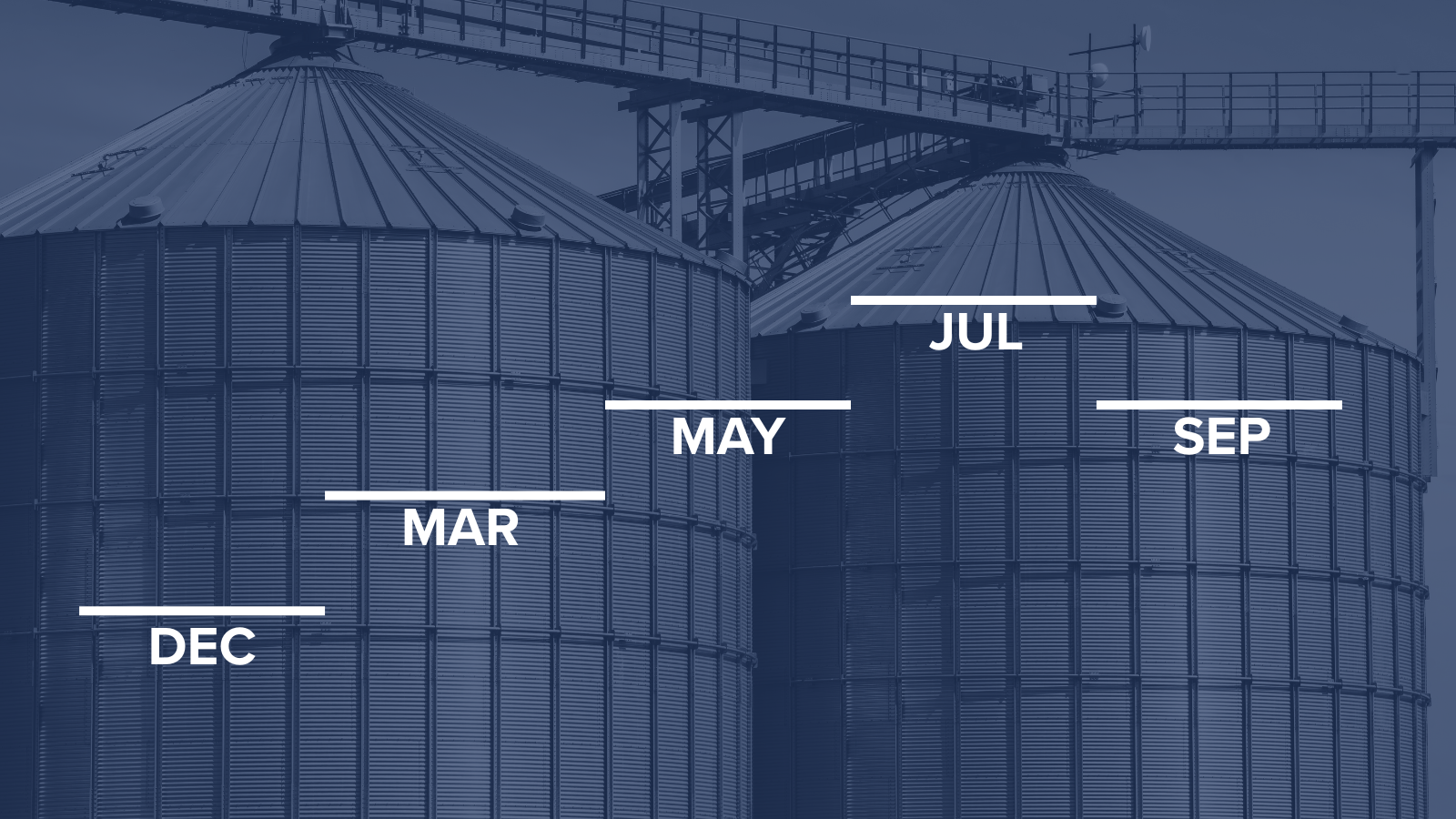Why?
Pre-spreading is about locking in spread structure that will support your merchandising plans. (e.g., if you plan to carry grain you need a carry spread structure). It’s best viewed as a defensive or protective maneuver – you are taking a good number now to avoid the possibility of taking a bad one later.
How many/which ones?
Most basis traders are surprised to find out that they need fewer spreads than they thought, and that they don’t always need the ones they expect. Pre-spreading isn’t about adding new transactions, it’s about doing transactions that were already going to happen – but doing them in a different order than usual. Due to all the offsetting transactions that occur in the normal course of grain trading, the number of bushels that need to be spread is the net of all purchases and sales vs different futures months. The best way to calculate how many and which spreads you need is to do a Grain Flow analysis of anticipated purchases and sales.
What number?
There are two things to consider when you are choosing spread targets.
- What does any particular spread number mean to me?
You have a measurable cost of holding grain and any spread can be measured against that. (e.g., if it costs you 12¢ to carry grain for 8 months, a 24¢ spread is 200% of your cost) This is the practical impact of the spread on your merchandising and should carry a heavy weight in the decision.
- What is the reasonable potential for a given spread?
While spread management isn’t about predicting spreads, it’s important to have some context for how wide a spread might get. History, the current environment (crop, prices, and interest rates), and the “full carry” calculation all play a role in providing context.
When?
New crop spreads have broad seasonal tendencies and planning should start before spreads start building carry. In addition, for some crops the seasonal tendency is to build carry, then lose it when planting or growing concerns cause prices to rise, then either recover or keep getting worse depending on what happens to the crop. The plan should include locking in some carries before this seasonal dip either takes carry away permanently or leads to a panic decision to set a narrow spread.
How?
A plan of scaled orders with some review dates and a goal of having some percentage of needs fixed prior to harvest increases your chances of staying disciplined and accomplishing your goals.
| Corn example*: |
20% @ 200% of carry (or ~40% of full carry)
20% @ 250% of carry (or ~45% of full carry)
20% @ 280% of carry (or ~50% of full carry)
20% @ 350% of carry (or ~60% of full carry)
*math is approximate
|
| Review orders on the 15th of each month and revise as/if necessary |
This example plan is a guideline based on the current environment – the best plan is one you make for yourself.



